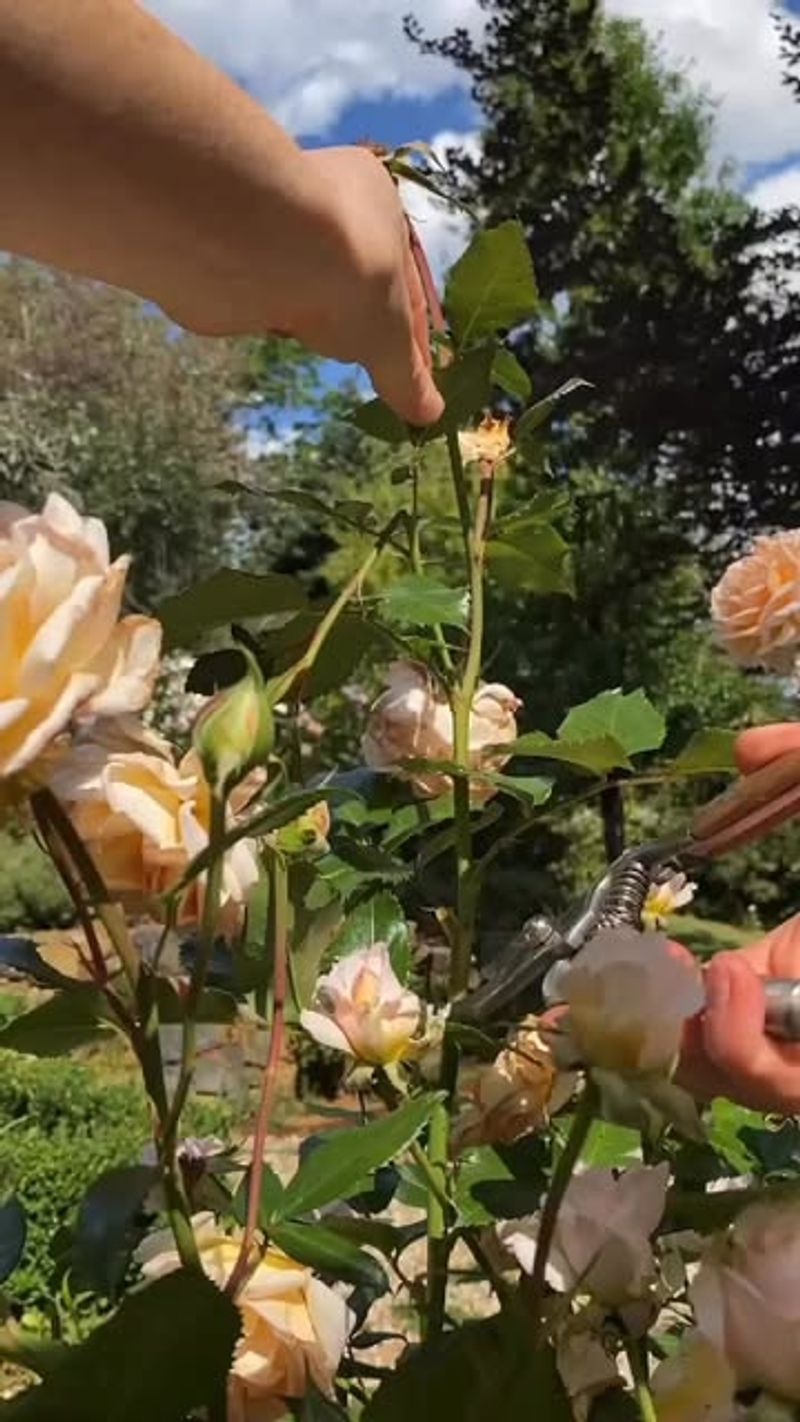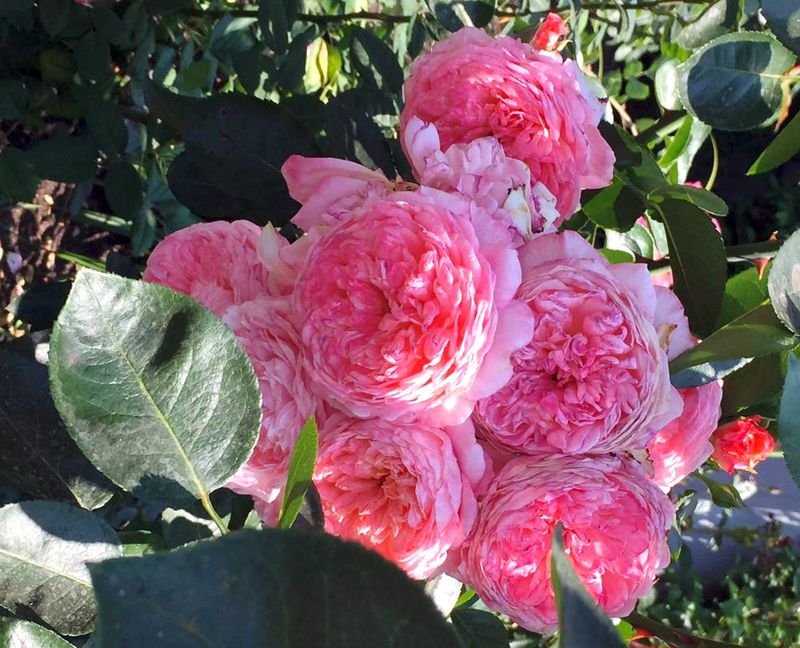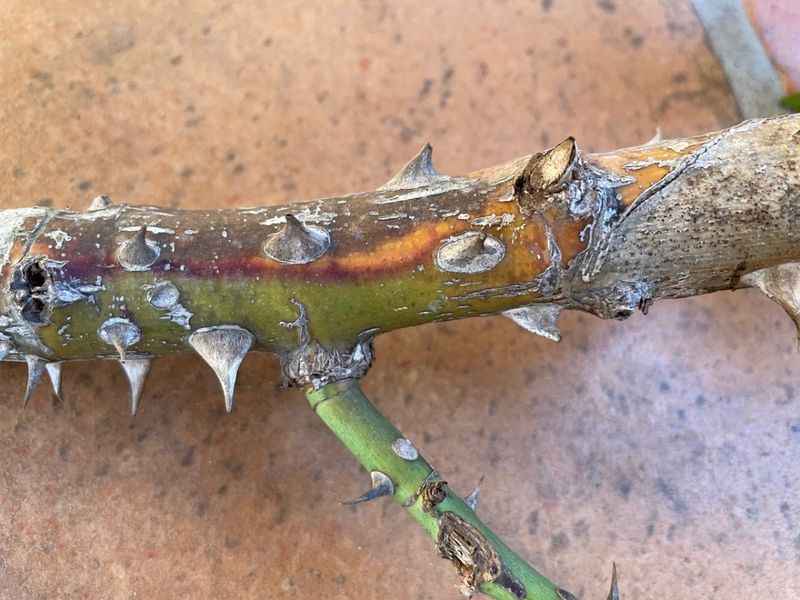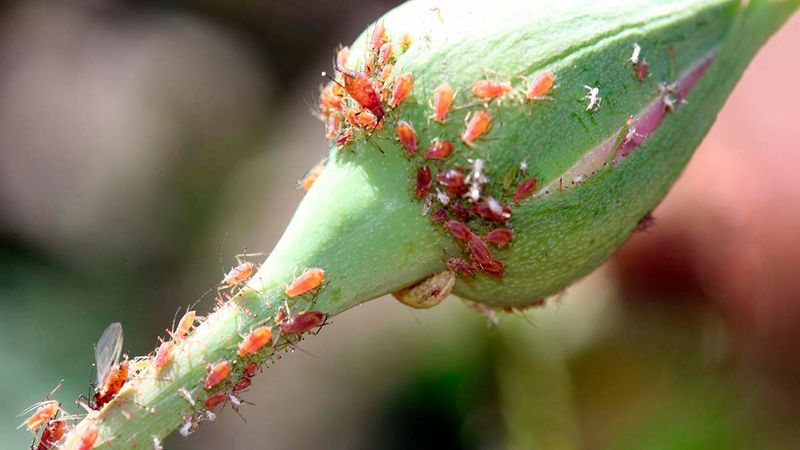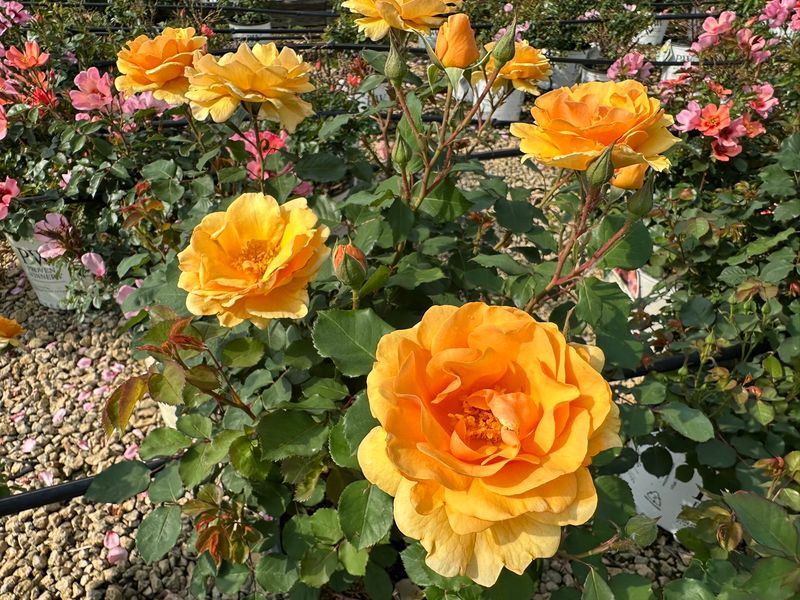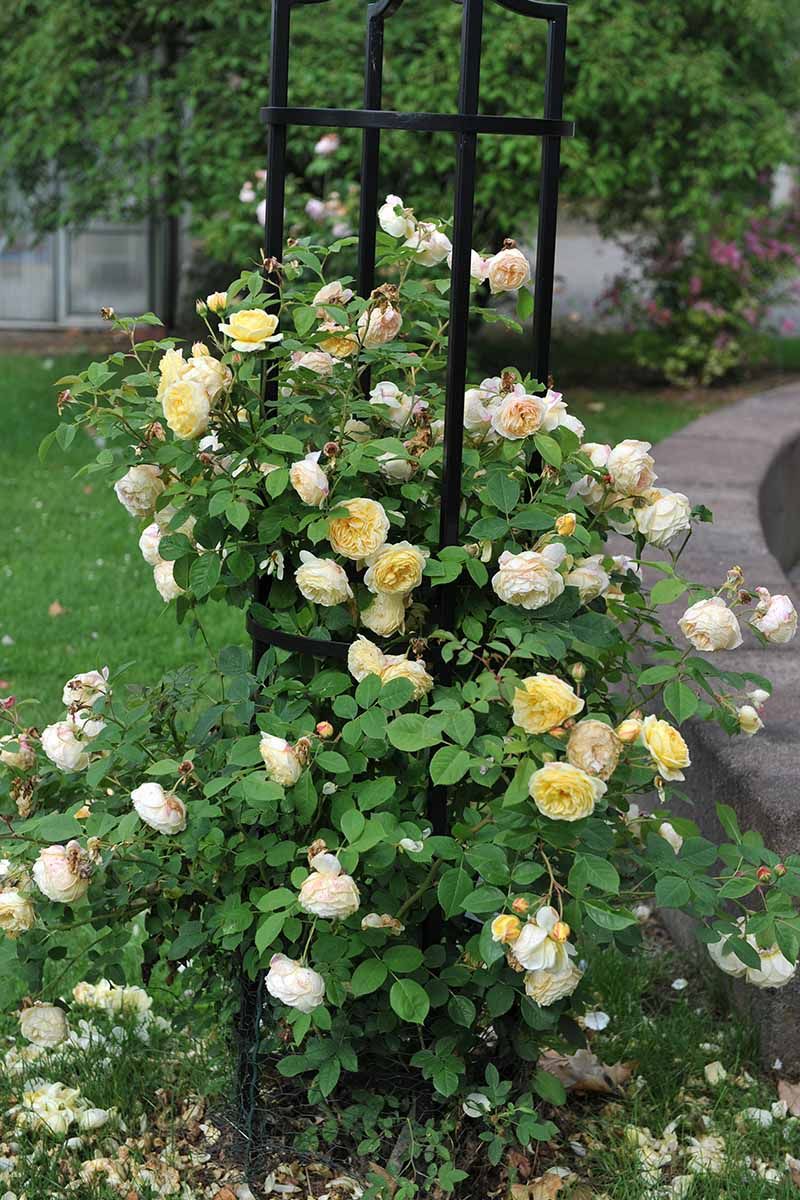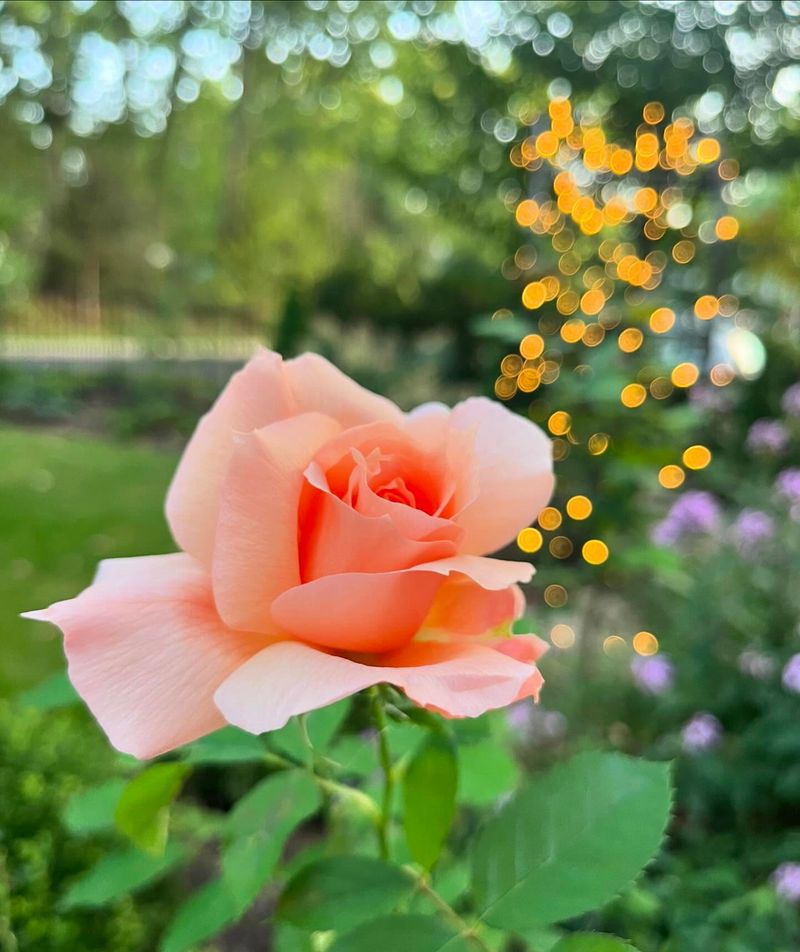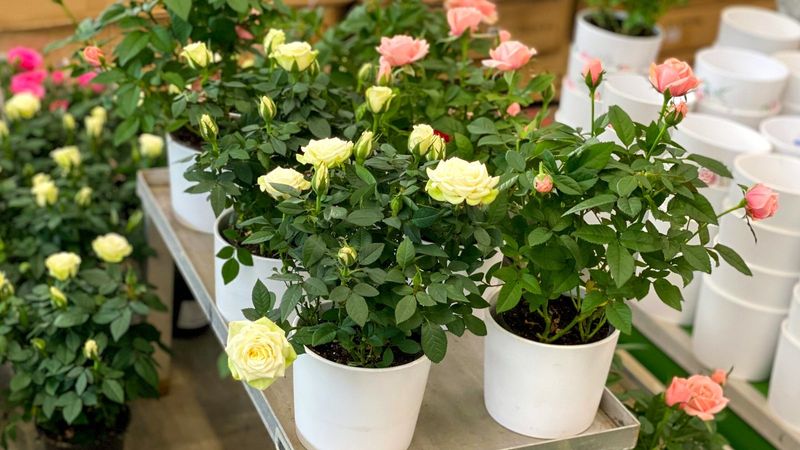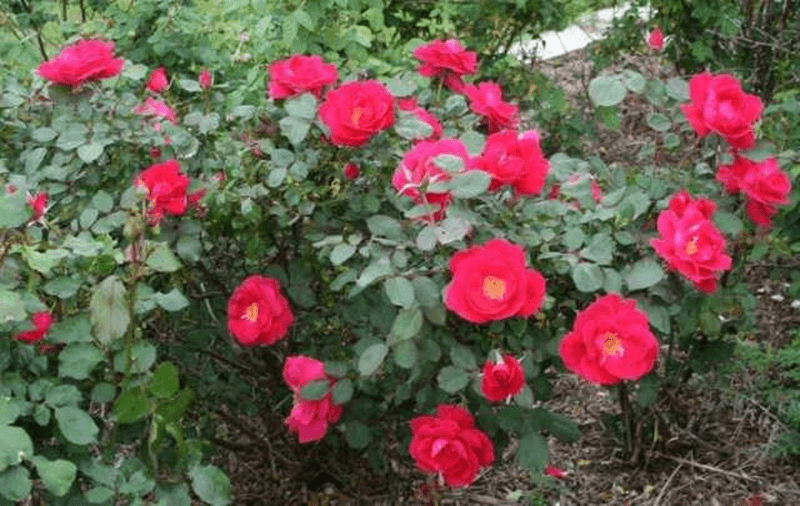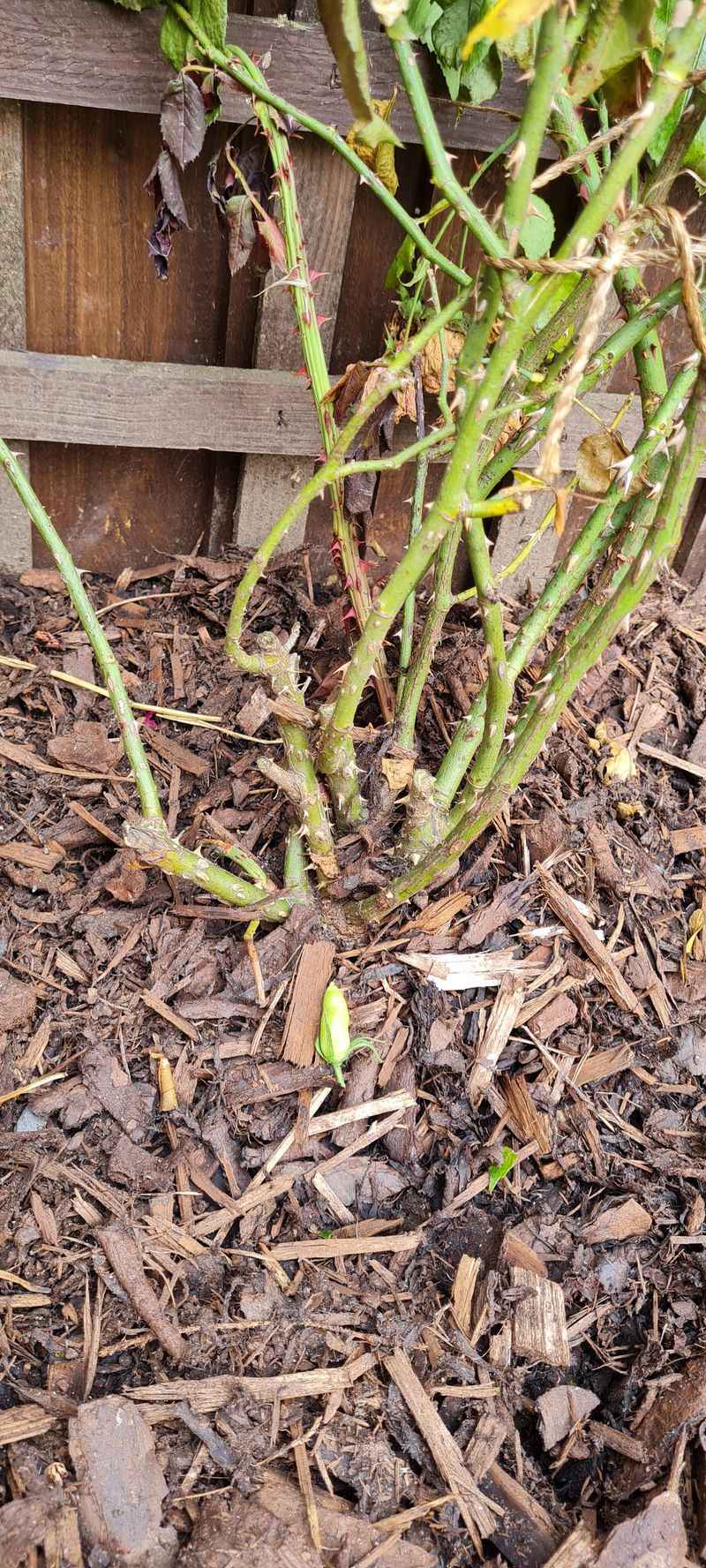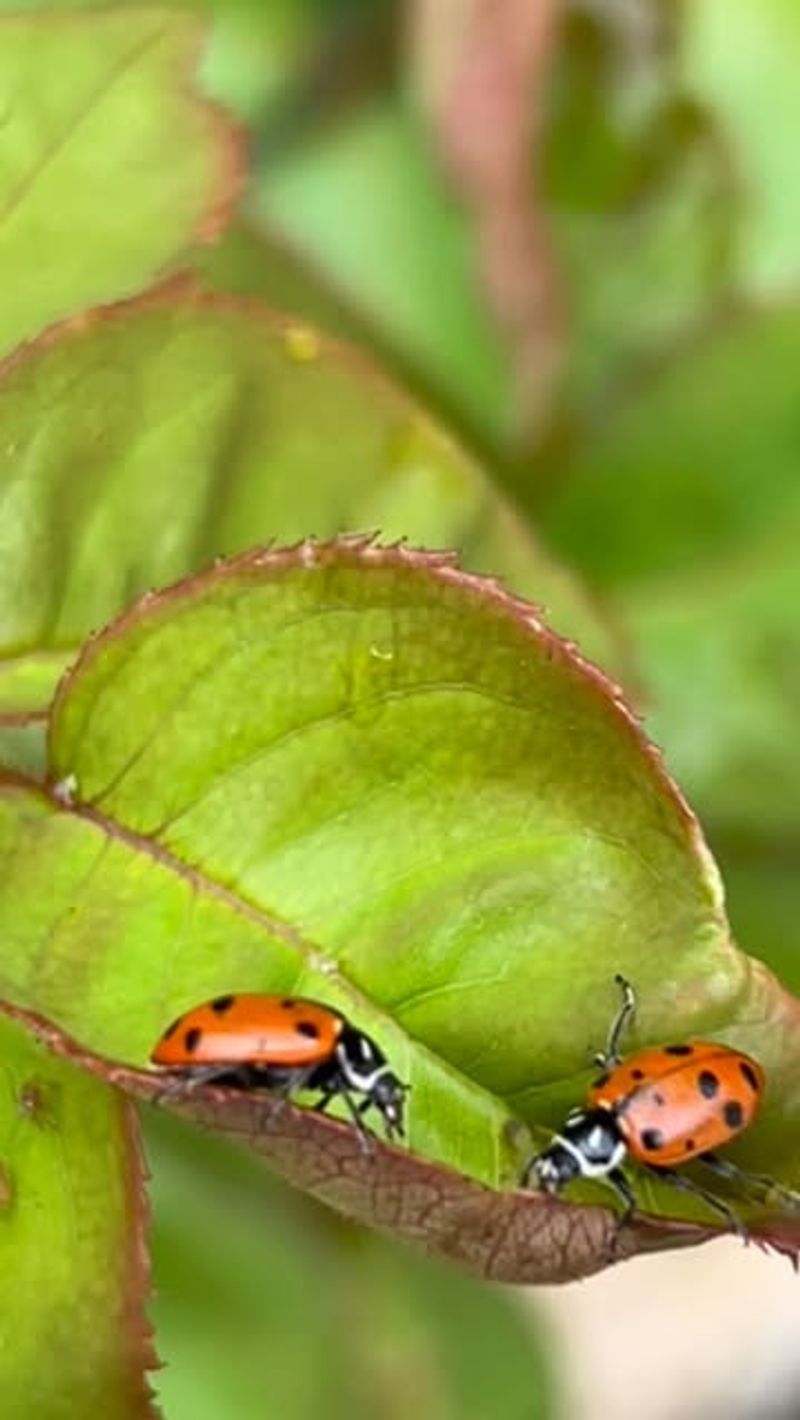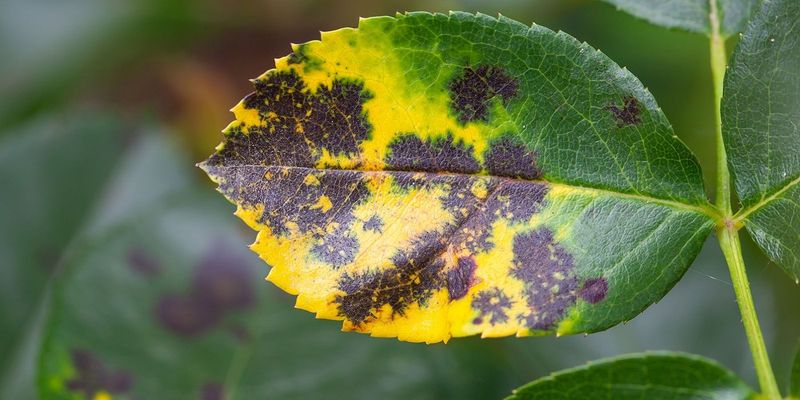It’s tempting to snip away at your roses in summer when they start looking unruly—I’ve definitely stood there, shears in hand, ready to “tidy things up.” But I’ve learned the hard way that timing really is everything with these finicky beauties.
Summer pruning might seem harmless, but it can actually stress your rose bushes, especially when they’re already working hard to handle the heat. Instead of encouraging more blooms, it often leads to fewer flowers and weaker growth later in the season.
So if your roses look a bit wild right now, don’t panic—or prune. Focus instead on deadheading spent blooms, feeding them gently, and giving them plenty of water. Those small acts of care will pay off more than a mid-summer snip ever could.
1. Heat Stress Doubles Down
During hot months, plants already struggle to maintain moisture balance. Cutting stems creates wounds that force the plant to heal while battling heat stress.
Your garden friends are essentially fighting on two fronts—trying to stay hydrated while also repairing damage from pruning. I’ve watched roses wilt dramatically after summer pruning, sometimes taking weeks to recover.
Instead, focus on deep watering early in the morning. Apply mulch around the base to retain moisture and keep roots cool without adding the stress of healing cuts.
2. Bloom Cycle Disruption
Summer cuts interrupt the natural flowering cycle that’s already in progress. When you prune mid-season, you’re removing buds that were preparing to open in the coming weeks.
The plant must then redirect energy to heal rather than produce the flowers you’ve been waiting for. Last year, I impatiently pruned my Floribunda in July and didn’t see another bloom until nearly September.
A better approach is gentle deadheading—just removing spent flowers right below the bloom. This encourages more flowering without the shock of major cutting.
3. Disease Gateway Creation
Fresh cuts in humid summer conditions create perfect entry points for fungal spores and bacteria. These wounds stay open longer in summer’s heat as the plant struggles to heal properly.
Pathogens that might normally be fought off can gain a foothold when your roses are focusing energy on both healing and surviving hot weather. My neighbor’s beautiful climber developed black spot that spread rapidly after her mid-July pruning session.
Focus instead on improving air circulation by removing only crossing branches or dead wood, and water at soil level to keep foliage dry.
4. Energy Reserves Depletion
Summer is when roses build up energy stores for next year’s growth. Heavy pruning forces plants to use these reserves for healing rather than strengthening for future seasons.
The result is often weaker performance the following spring. I learned this lesson after aggressively cutting back my tea roses one August—they produced half their normal blooms the next May.
Rather than pruning, feed your roses with a balanced, slow-release fertilizer early in summer, then switch to low-nitrogen options by mid-July to support root development without forcing tender new growth.
5. Sunscald Risk Increase
Removing protective foliage during intense summer sun exposes previously shaded canes to direct sunlight. This sudden exposure can cause sunscald—literally sunburn for your plants—leaving brown, damaged areas on stems.
These damaged sections become weak points vulnerable to pests and disease. The first time I witnessed this, I was shocked by how quickly the exposed canes turned from green to brown.
Instead of pruning, provide temporary shade for roses during the hottest part of the day using shade cloth or strategically placed taller plants that offer dappled protection.
6. Pest Invitation Party
Fresh cuts release plant compounds that essentially broadcast dinner invitations to pests. The scent of sap attracts everything from aphids to borers looking for easy meals.
In summer, pest populations are already at their peak, making the problem worse. I’ve watched in horror as aphids colonized my freshly pruned Grandiflora within hours of my summer trimming session.
Rather than creating pest magnets, focus on regularly hosing off your roses in the morning to dislodge existing pests, and encourage beneficial insects by planting companion flowers like alyssum and lavender nearby.
7. Winter Hardiness Compromise
Late summer pruning stimulates tender new growth that won’t have time to harden off before cold weather hits. These soft new shoots are the first to suffer winter damage.
The plant essentially wastes energy producing growth that won’t survive. My grandmother taught me this lesson after I enthusiastically pruned her heirloom roses in August—the new growth was killed by the first frost.
Save your pruning energy for early spring when plants are still dormant. For summer maintenance, simply remove obviously dead canes by cutting them at the base of the plant.
8. Natural Shape Distortion
Summer pruning often leads to oddly shaped plants as roses respond with uneven growth patterns. The plant’s natural architecture gets disrupted, resulting in lopsided bushes or awkward growth directions.
This not only looks unnatural but can create structural weaknesses. After impulsively reshaping my shrub rose last July, it grew back with a strange, off-balance form that took two seasons to correct.
For summer tidying, limit yourself to removing spent blooms and waiting until dormancy for major shaping. Take photos of your roses in full bloom to plan your dormant-season pruning strategy.
9. Pollinator Support Reduction
Summer roses provide essential nectar and pollen for bees, butterflies, and other beneficial insects. Cutting back flowering stems removes these critical food sources during peak pollinator season.
The impact extends beyond your garden as these creatures need consistent food sources. I’ve noticed the dramatic difference in butterfly visits between my lightly maintained roses and my neighbor’s heavily pruned collection.
Instead of pruning, embrace a slightly wilder summer garden. Leave spent blooms that have begun to form rose hips—they’ll feed birds later while adding visual interest to your garden.
10. Growth Hormone Interference
Roses produce natural growth hormones called auxins that flow from the tips downward. Summer pruning disrupts this hormone distribution, confusing the plant’s growth signals.
The result is often erratic growth patterns and reduced flower production. My most prolific climbing rose stopped producing side shoots after I trimmed it back one June, growing straight up instead of in its usual arching pattern.
Rather than fighting your plant’s natural hormones, direct growth by gently tying climbing or rambling roses to supports in the direction you want. This works with the plant’s biology rather than against it.
11. Fall Flush Prevention
Many roses produce a magnificent final bloom display in autumn if left unpruned in summer. This “fall flush” can be the most spectacular showing of the year.
Cutting back in July or August often means sacrificing this grand finale. The first time I witnessed a fall flush on my untouched ‘Knock Out’ roses, I was amazed by how much more abundant it was than their spring display.
Focus summer efforts on consistent watering and monthly organic fertilizing through July to support this natural cycle. Your patience will be rewarded with an impressive autumn show.
12. Transplant Shock Similarity
Heavy summer pruning creates a physiological response similar to transplant shock. The plant experiences significant stress as it loses photosynthesizing foliage while trying to cope with heat.
This double-whammy can set back growth for weeks or even months. When I drastically cut back an overgrown floribunda last August, it looked stunted and unhealthy until the following spring.
If summer maintenance feels necessary, limit yourself to removing no more than 20% of the plant at once. Focus instead on improving soil with a thin layer of compost and consistent moisture.
13. Microclimate Disruption
Roses create their own beneficial microclimate with their foliage, maintaining humidity levels and temperature regulation around the plant. Summer pruning destroys this self-created environment.
The sudden exposure to different conditions can shock the plant and surrounding beneficial soil microorganisms. My garden journal notes show consistently higher water needs in areas where I’ve disrupted these natural microclimates through summer pruning.
Work with this natural protection by mulching around roses with compost or shredded leaves. Hand-remove only obviously diseased leaves rather than performing wholesale cutting.
14. Root System Weakening
There’s an invisible balance between a plant’s above-ground growth and its root system. Summer pruning forces the plant to reduce root development as it redirects energy to healing cuts and producing new shoots.
This weakened root system means less drought resistance and nutrient uptake. After summer-pruning my hybrid teas three years ago, they struggled through the following dry spring in ways my unpruned roses didn’t.
Support root development by applying a layer of worm castings around the drip line in early summer. This gentle feeding strengthens the entire plant without stimulating excessive new growth.
15. Beneficial Insect Habitat Destruction
The dense summer foliage of roses provides crucial habitat for predatory insects like ladybugs and lacewings that control pest populations. Pruning away this cover sends these helpful allies packing.
Without these natural pest controllers, you’ll likely face worse pest problems. I’ve documented the dramatic increase in aphid populations that follows summer pruning when the ladybug habitat disappears.
Maintain this natural pest control by creating habitat diversity. Plant low-growing herbs like thyme or oregano around rose bases to provide alternative shelter for beneficial insects even during necessary maintenance.
16. Photosynthesis Capacity Reduction
Every leaf removed in summer reduces the plant’s ability to produce energy through photosynthesis. This happens precisely when roses need maximum energy production to support current blooms and prepare for winter.
The result is often smaller flowers and reduced overall vigor. Tracking my rose performance showed that bushes with intact summer foliage consistently outperformed their pruned counterparts the following season.
Focus instead on optimizing what’s there—wash dusty foliage occasionally with a gentle spray of water in the morning so leaves can photosynthesize efficiently. Remove only completely dead or diseased leaves.
17. Seasonal Rhythm Disruption
Roses have evolved natural growth cycles aligned with seasonal changes. Summer pruning forces them out of this natural rhythm, creating confusion in their biological timing.
This disruption can affect everything from bloom timing to disease resistance. My old garden roses that I leave untouched in summer develop a beautiful natural form and bloom exactly when they should—a lesson in trusting plant wisdom.
Embrace seasonal changes by switching your focus to summer rose appreciation rather than modification. Photograph your roses throughout the season to better understand their natural cycles and plan appropriate dormant-season pruning.



